Sheathed Woodtuft / Spring / Summer / Autumn / Winter / Edible
Scientific Name
Kuehneromyces Mutabilis
Common Names
Sheathed Woodtuft, Brown Stew Fungus and Two-toned Pholiota.
Family
Strophariaceae
Habitat
They are saprobic, feeding on dead wood, logs and stumps, most often birch. They typically grow in large clumps. They sometimes appear to be growing on the ground but if you scrape away some of the dirt you’ll normally find a well-rotted piece of wood.
Description
Definitely not a beginners mushroom, they can look almost identical to the Funeral Bells (Galerina Marginata) which are potentially deadly poisonous. Sometimes they can only be properly identified by microscopic features or observing colour changes when chemicals are dropped on the flesh.
Identifying Features:
Cap:
They are hygrophanous, meaning that their colour can vary depending on how wet they are. When young they are tan-brown but will lighten in colour from their central umbo outwards. Giving a two-toned appearance. The caps are convex but tend to flatten out as they mature.
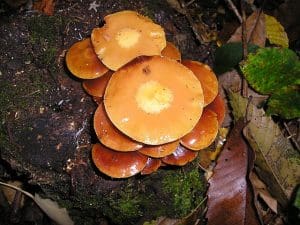
Stem:
The stems are quite long and thin and have a ring. Above the ring the stem is smooth and pale brown in colour, below the ring, it’s darker and covered in brown scales. The stems also tend to be curved.
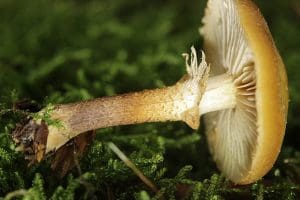
Gills:
The gills are pale brown when young, darkening with age to a red/brown colour. They are crowded and adnate.
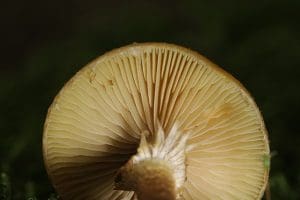
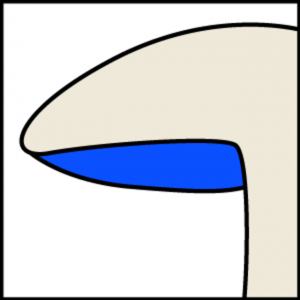
Smell:
No real aroma. Sometimes appearing to smell damp but I often think that’s because you will be surrounded by decaying wood.
Spores:
Red to dark cinnamon brown.
Uses
In food
They are edible but not highly regarded. The stems are very tough so need to be discarded or used for stock.
As one of the common names suggest, they work well in stews.
Harvesting
They are most common in summer and autumn, they can appear right throughout the year.
Not for the novice! I would recommend against collecting them.
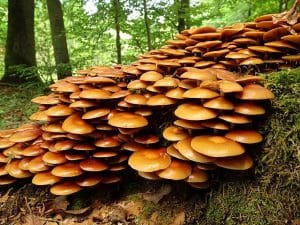
Known hazards
None known.
Potential lookalikes
The Funeral Bell (Galerina Marginata) can look similar but whilst this is also hygrophanous it becomes lighter from the edge towards the centre. The opposite to the Sheathed Woodtuft. The Funeral Bell also has a distinct smell that is not pleasant. They also have larger spores than the Woodtuft but you would need a microscope to observe this. As the name suggests Funeral Bells are toxic so care should be taken.
The Velvet Shank (Flammulina Velutipes) might also look similar, but it has a dark, velvety stem and leaves a white spore print. This is a good edible species.
Extra Notes
The Kuehneromyces part of their name comes from the name of an American mycologist, Calvin Kuehner. Mutabilis is derived from the Latin Mutatus, meaning change or alteration, in reference to the changeable nature of the cap colour.
1 reply on “Sheathed Woodtuft (Kuehneromyces Mutabilis) Identification”
Leave a Reply
You must be logged in to post a comment.



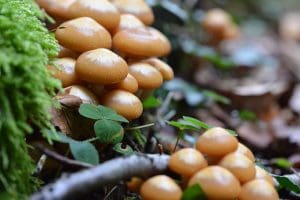



Great content! Keep up the good work!